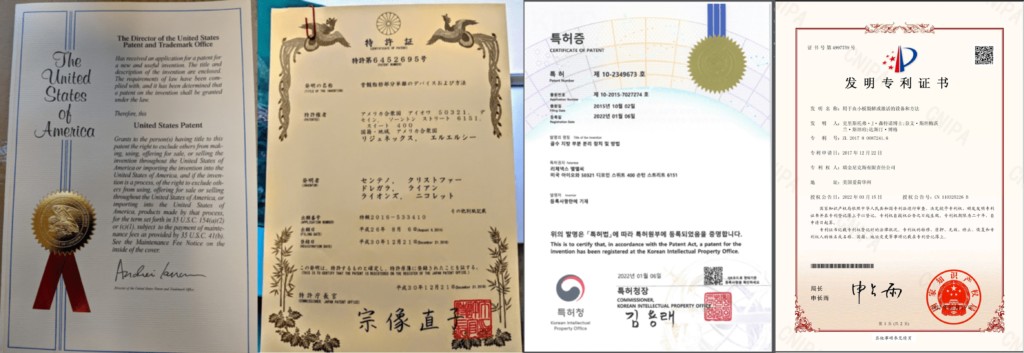Patent Art and Regenexx

Regenexx was just awarded yet another patent, this time from China. That rounds out a trio of Asian patents. Let’s dig in.
Regenexx Patents
I’ve lost track of how many patents we’ve been awarded by various countries. Our research programs in the clinic and lab generate intellectual property. Some of that is kept internal and some is used to create new patents. While the US is always the most critical patent we apply for and this can be extended into various PCT (Patent Cooperation Treaty) countries, for some nations you still need to file locally.
Our PL Patent
We have pioneered the clinical use of what’s called platelet lysate (PL). That’s when the doctor extracts the valuable growth factors out of platelets. We have filed for and received patents on various devices that create PL. To learn more about PL, see my video below:
Patent Art
This PL patent has been issued in the US and also in the trio of countries you see above. That’s our US patent to the left, then our Japanese patent, then the South Korean version, and finally our newest patent from China. What I find interesting is that patent art tends to reflect the values of each country.
The US patent looks like a document out of the old west. Why? Because if there’s one thing that’s uniquely American, it’s cowboys and six guns.
The Japanese patent (#2 above) looks like what you see on a visit to that country. Beautiful phoenixes and bamboo trees. A place where preserving pockets of natural beauty is supremely important but also one where innovation and anything new is also prized.
The third patent is South Korea, home to countless electronics companies like Samsung. It’s scientific-looking, efficient, and sleek. It screams high-tech with its watermark looking like graph paper.
Finally, we have China off to the far right. Note the red color used for the official seal. In Chinese culture red means fire which symbolizes good fortune and joy. You see the five stars, which represent the unity of the Chinese people around their government. The orientation of the stars shows that this revolves around a center. You also see the Tiananmen Gate, the entrance to the Forbidden City, where Mao declared the foundation of the People’s Republic of China (PRC) in 1949. Finally, the seal is surrounded by sheaves of wheat and rice, which together represent agricultural workers. At the center of the bottom portion is a cog-wheel that represents industrial workers.
The upshot? At Regenexx we’re proud that our innovation has led to many US and international patents. I also love checking out how the symbolism in each one represents that country. Here’s to more innovation in orthobiologics!

NOTE: This blog post provides general information to help the reader better understand regenerative medicine, musculoskeletal health, and related subjects. All content provided in this blog, website, or any linked materials, including text, graphics, images, patient profiles, outcomes, and information, are not intended and should not be considered or used as a substitute for medical advice, diagnosis, or treatment. Please always consult with a professional and certified healthcare provider to discuss if a treatment is right for you.
